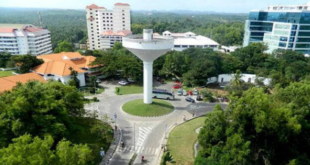
Life Of Pi – The movie released by major motion picture last week  is a huge hit in box offices. This movie is based on the best-selling novel by Yann Martel, is a magical adventure story centering on Pi Patel, the precocious son of a zoo keeper. Dwellers in Pondicherry, India, the family decides to move to Canada, hitching a ride on a huge freighter. After a shipwreck, Pi finds himself adrift in the Pacific Ocean on a 26-foot lifeboat with a zebra, a hyena, an orangutan and a 450-pound Bengal tiger named Richard Parker, all fighting for survival.
But do you know how the story is connected with Trivandrum Zoo? .You can read the story appeared in The GuardianÂ
But the 39-year-old Canadian author was quick to point out, after scooping the £50,000 prize, that his novel was not “exoticâ€. His compelling descriptions of quirky animal behaviour are based on genuine research. He spent a lot of time at Trivandrum Zoo, he said.
Virtually all the animals in Martel’s gripping tale of shipwreck and survival can be found living in the zoo. (Only the doomed orang-utan is missing.) With one failed book behind him, Martel – then merely an aspiring writer – spent six months in south India in 1996. He visited Trivandrum Zoo, where he interviewed its director, observed the tigers, and ate French toast in the Indian Coffee House just across the road. The Life of Pi started to emerge in a “smashed up, kaleidoscopic†way.
It is no surprise that the zoo sparked Martel’s zany imagination: it is a place of wonder and delight. Founded by the Maharajah of Travancore in 1857, it is set in a rambling botanical garden in the centre of Trivandrum, the capital of Kerala, close to the sea. The maharajah wanted to attract more people to his newly-built museum, and so he constructed a city zoo nearby, and stuffed it full of animals captured from the surrounding jungles. The jungles have now disappeared, and so has most of the wildlife. The zoo in the Life of Pi – “a hot and humid place, bathed in sunshine and bright colours†– closely resembles that of the eccentric maharajah. It is “big enough to require a train to explore it.â€
 TechnoparkToday.com – Techies News, Jobs, Events & Lifestyle! Technopark News Jobs & Lifestyle!
TechnoparkToday.com – Techies News, Jobs, Events & Lifestyle! Technopark News Jobs & Lifestyle!




